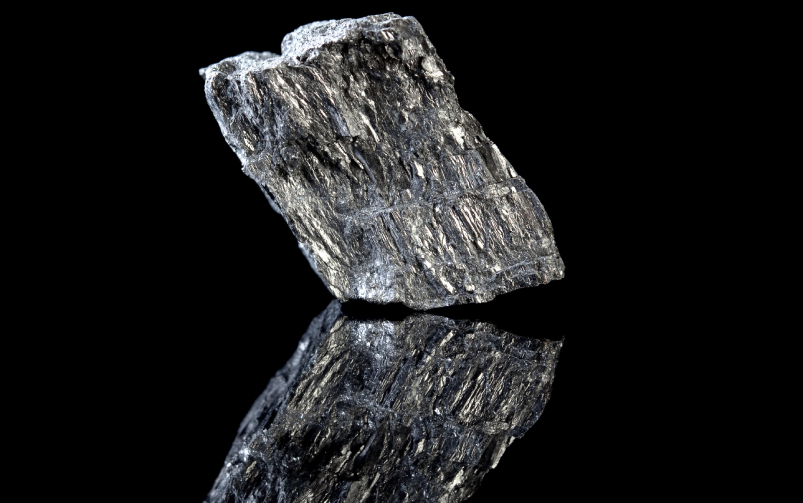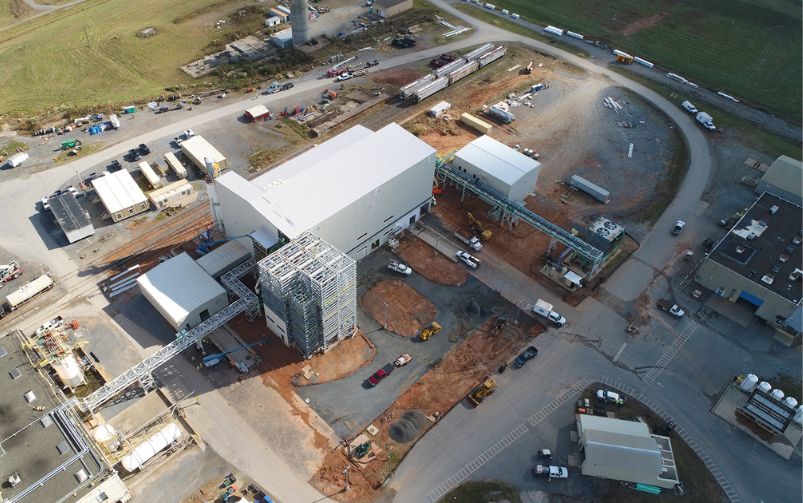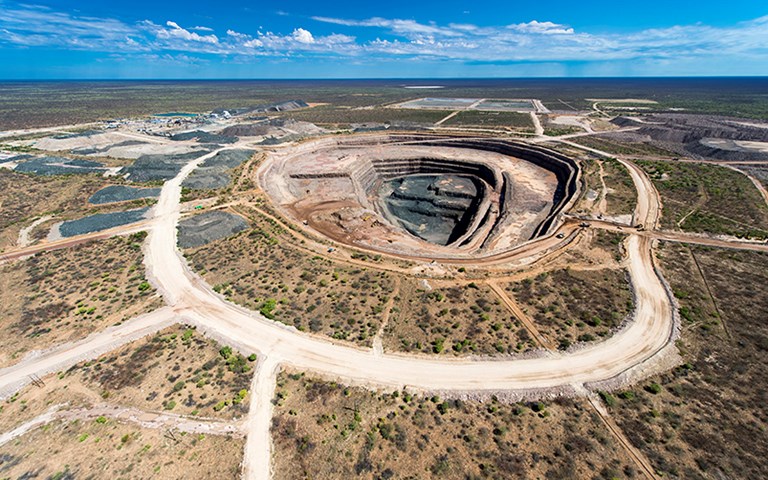A diamond larger than 600 carats was unearthed at Lucara Diamond’s Karowe mine in Botswana. Courtesy of Lucara Diamond Corp.
Welcome back to your weekly mining news recap, where we catch you up on some of the news you may have missed. This week’s headlines include a possible federal impact assessment for Kinross Gold Corporation’s Great Bear project, one of the biggest diamond finds of the year and a moon landing that takes us one step closer to lunar mining.
Ongoing wildfires in Northwest Territories, which forced the evacuation of Yellowknife, have also impacted a number of mine operations and projects, as reported by the Financial Post. Gold Terra Resource Corp. has suspended its drill program, located about 10 kilometres away from the capital. Junior miner Sixty North Gold Mining said it has contacted its insurance company about a potential claim after a fire went through its Mon gold property. Smoky conditions forced the suspension of Li-FT Power Ltd. lithium project. The evacuation of many Yellowknife-based employees of diamond miners further north has also affected their operations.
India’s Chandrayaan-3 spacecraft landed on the moon’s south pole region on Wednesday, which could be home to water ice deposits, as reported by CNN. According to Reuters, water ice could be key to a moon colony, lunar mining and potential missions to Mars. If water ice exists in sufficient quantities, it could be converted into fuel or drinking water to support missions to Mars and lunar mining.
Sweden’s climate minister, Romina Pourmokhtari, has announced plans to lift the country’s ban on uranium mining to allow for greater nuclear energy capacity, as reported by Mining Technology. According to the minister, the Swedish Parliament has shown majority support to lift the ban, and the government plans to build at least 10 large reactors in the next 20 years to meet the demand for low-carbon energy. Several companies, including Canada’s District Metals, have already expressed interest in developing uranium sites in Sweden.
Electra Battery Materials said it is going to “pause or slow down” construction at its Temiskaming cobalt refinery while it looks for industry partners and government funders for help in finishing the project, as reported by Northern Business Ontario. In its second quarter results, Electra stated it has spent $81.7 million to date out of the estimated $155 to $167 million needed to complete the project. Electra CEO Trent Mell said to analysts that once the funding is received, the plant could be finished within 12 months.
Patriot Battery Metals has resumed its mineral exploration and development programs at its Corvette property in the Eeyou Istchee James Bay region of Quebec as of early August 2023, as wildfires in the region gradually abated. The wildfires delayed the company’s on-site activities during the summer months, but no equipment or property at Corvette has been lost. The area around the property re-opened in late July, but access by road has been limited due to nearby ongoing wildfires.
BHP Xplor, a six-month cohort-based accelerator program that is focused on finding new resources of critical minerals, has begun a global search for early-stage explorers and start-ups after last year’s successful first cohort. The program gives participants funding, mentorship and coaching to help accelerate their exploration concepts, as well as connects them with BHP’s network of suppliers and service providers. Selected companies will receive a cash payment up to US$500,000 and the potential to establish a long-term partnership with BHP. The program will accept applications until October 11.
The Impact Assessment Agency of Canada (IAAC) has asked for public feedback on whether the proposed Great Bear gold project, owned by Kinross Gold Corporation and located 23 kilometres southeast of Red Lake in northwestern Ontario, should undergo a federal impact assessment or not, as reported by Northern Business Ontario. Indigenous people and other members of the public can review the mine project’s description and submit comments to help the IAAC prepare a summary of potential issues.
Vancouver-based Lucara Diamond has recovered a 692.3-carat diamond, a Type IIa high white gem measuring 46.5 x 40.7 x 28.4 mm from its Karowe diamond mine in Botswana. The company said it is the fourth diamond larger than 300 carats recovered this year to date, and the 20th diamond larger than 100 carats found at the Karowe mine in 2023. The mine had also recovered a 1,080-carat white top gem in early August.
In June, Sayona Mining Limited released a preliminary study for the North American Lithium operation, a lithium carbonate production plant in Quebec, bringing it closer to becoming a downstream producer of lithium chemicals, wrote Silvia Pikal in the August issue of CIM Magazine. According to the study, the project would produce 372,000 tonnes of battery-grade lithium carbonate, over a project life of 16 years. It also showed that the project could generate a pre-tax net present value of $2.9 billion at an eight per cent discount rate. It recently announced its first commercial shipment of 20,500 tonnes of spodumene concentrate.
Rio Tinto’s Borax mine became the first open-pit mine globally to transition its entire fleet and blasting process to renewable diesel in June, reducing emissions by an expected 45,000 tonnes of carbon dioxide equivalent per year, wrote Kelsey Rolfe in the August issue of CIM Magazine. Rio Tinto converted a fleet of roughly 35 vehicles at Borax after a successful year-long pilot project.
That’s all for this week! If you’ve got feedback, you can always reach us at editor@cim.org. If you’ve got something to add, why not join the conversation on our Facebook, Twitter, LinkedIn, or Instagram pages?




